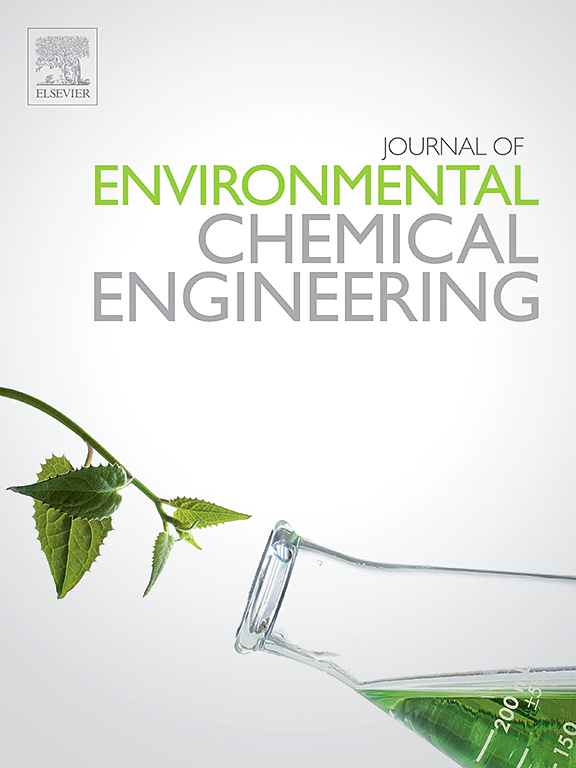展示气密还原氧化石墨烯和氧化石墨烯薄膜的潜力:从x射线设备的窗口到燃料电池的质子交换膜
IF 7.4
2区 工程技术
Q1 ENGINEERING, CHEMICAL
引用次数: 0
摘要
氧化石墨烯悬浮液的蒸发组装工艺已被用于开发气密、自支撑的薄膜,其面积跨越数十平方厘米,显示出卓越的性能。对这些层压板的特点和具体特点进行了详细的分析。氧化石墨烯的初始悬浮液及其加工历史对于决定薄膜的最终物理化学性质及其表面的碳氧比(C/O)至关重要。这种可变性归因于氧化石墨烯薄片的结构动力学。此外,这些层合材料表面官能团的热稳定性和还原性也得到了深入的研究。值得注意的是,环境友好的还原试剂,如抗坏血酸,比热处理更能显著提高C/O比率。虽然制备的氧化石墨烯膜显示出高电阻率,但与通过替代方法生产的膜相比,抗坏血酸还原膜的平面内导电性明显优于其他方法。这些薄膜的特性为各种应用带来了希望。还原氧化石墨烯薄膜具有低面内电阻率的特点,已被有效地用于比例计数器,以精确测量低能x射线发射率,作为危险和脆弱的铍窗的替代品。此外,所开发的氧化石墨烯膜已成功用于燃料电池中质子交换膜的概念验证。本文章由计算机程序翻译,如有差异,请以英文原文为准。
Demonstration of the potential for gas-tight reduced graphene oxide and graphene oxide films: From windows for X-ray devices to proton exchange membranes for fuel cells
The evaporation-assembly process of graphene oxide suspensions has been used to develop gas-tight, self-supporting films with areas spanning several tens of square centimeters, showcasing remarkable properties. A detailed analysis has been conducted on the characteristics and specific features of these laminates. The initial suspension of graphene oxide and its processing history are crucial in determining the resulting physicochemical properties of the films and the carbon-to-oxygen (C/O) ratios on their surfaces. This variability is attributed to the structural dynamism of the graphene oxide flakes. Furthermore, the thermal stability and reducibility of the surface functional groups within these laminates have been thoroughly investigated. Notably, environmentally benign reagents for reduction, such as ascorbic acid, significantly enhance the C/O ratios more than thermal treatment. While the as-prepared graphene oxide membranes demonstrate high electrical resistivity, their in-plane electrical conductivity is notably superior in films reduced with ascorbic acid compared to those produced through alternative methods. The properties of these films hold promise for a variety of applications. Reduced graphene oxide films, characterized by low in-plane electrical resistivity, have been effectively utilized in proportional counters to precisely measure low-energy X-ray emission rates, as a substitute for hazardous and fragile beryllium windows. Additionally, the developed graphene oxide membranes have been successfully implemented as proof of concept of proton exchange membranes in fuel cells.
求助全文
通过发布文献求助,成功后即可免费获取论文全文。
去求助
来源期刊

Journal of Environmental Chemical Engineering
Environmental Science-Pollution
CiteScore
11.40
自引率
6.50%
发文量
2017
审稿时长
27 days
期刊介绍:
The Journal of Environmental Chemical Engineering (JECE) serves as a platform for the dissemination of original and innovative research focusing on the advancement of environmentally-friendly, sustainable technologies. JECE emphasizes the transition towards a carbon-neutral circular economy and a self-sufficient bio-based economy. Topics covered include soil, water, wastewater, and air decontamination; pollution monitoring, prevention, and control; advanced analytics, sensors, impact and risk assessment methodologies in environmental chemical engineering; resource recovery (water, nutrients, materials, energy); industrial ecology; valorization of waste streams; waste management (including e-waste); climate-water-energy-food nexus; novel materials for environmental, chemical, and energy applications; sustainability and environmental safety; water digitalization, water data science, and machine learning; process integration and intensification; recent developments in green chemistry for synthesis, catalysis, and energy; and original research on contaminants of emerging concern, persistent chemicals, and priority substances, including microplastics, nanoplastics, nanomaterials, micropollutants, antimicrobial resistance genes, and emerging pathogens (viruses, bacteria, parasites) of environmental significance.
 求助内容:
求助内容: 应助结果提醒方式:
应助结果提醒方式:


